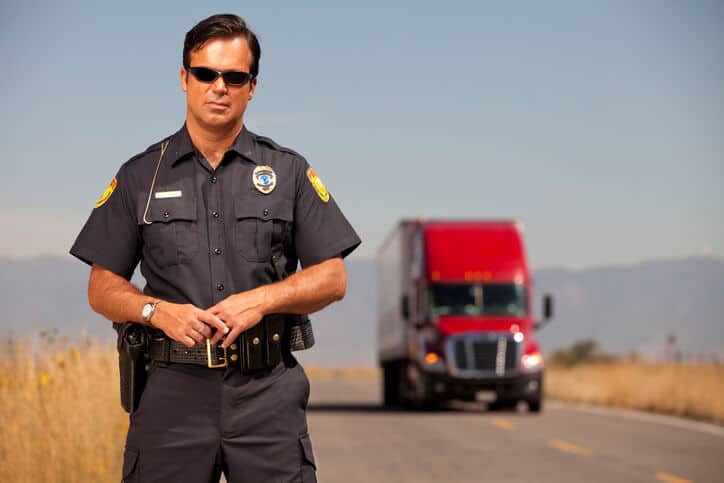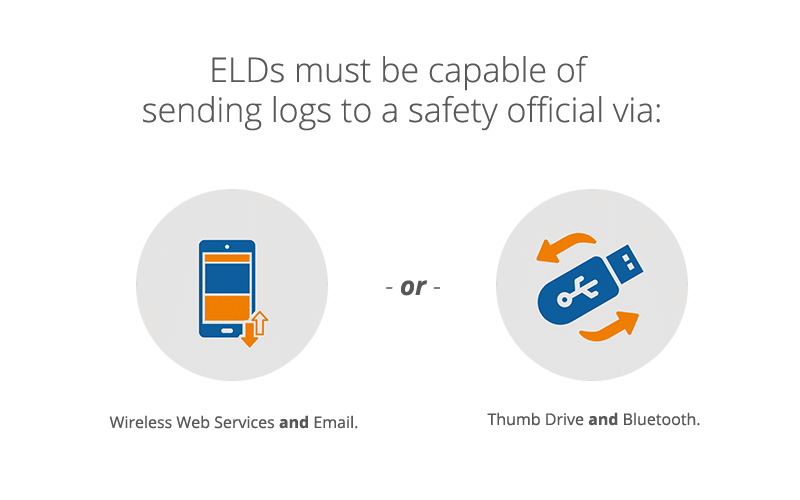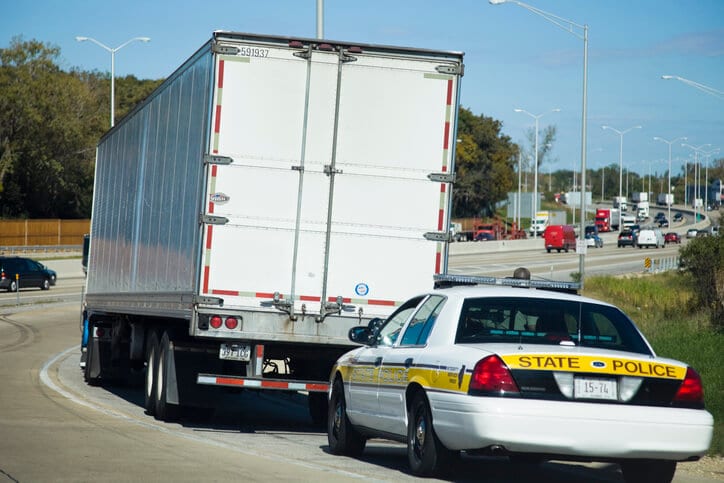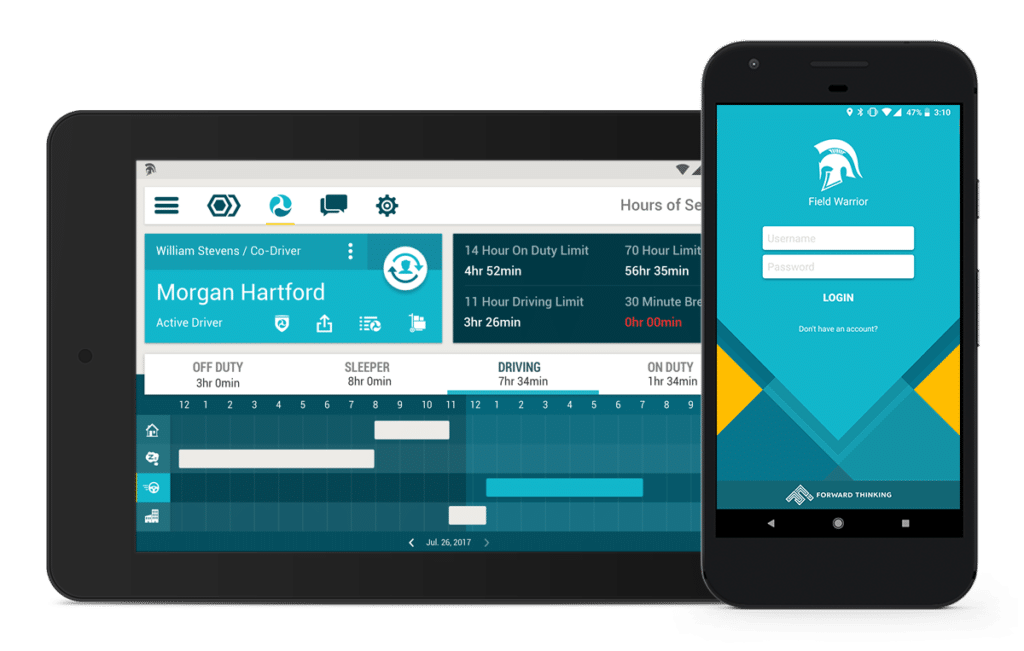Time is almost up. If you still haven’t installed and begun using an Electronic Logging Device (ELD) in your commercial vehicles, you only have a couple of weeks to do so. The deadline is December 16, 2019. After that, authorities will place your vehicles out of service.
Commercial vehicle drivers who aren’t exempt from tracking Hours of Service (HOS) must have the electronic logging device system installed in their vehicles in a matter of weeks. Drivers and administrators also need to know how to properly use the device, including how to display and transfer data to safety officials.
Drivers are also mandated to have certain information in the cab under the ELD rule. Drivers need to have:
Here are the top 5 questions we get about ELDs and the approaching deadline, along with more information about what you need to do to prepare for the switch.
(And if you’re looking for more information about the ELD rule, check out our ELD Resource Center that includes a comprehensive FAQ, links to official documents, and a background about the MAP-21 law.)
Yes. Some drivers were allowed to continue using an Automatic On-Board Recording Device (AOBRD) until December 16, 2019. They were:
Come December 16th however, everyone who has been using an AOBRD is required to switch to an ELD system and be properly trained on how to use it.

The main differences you’ll notice between AOBRDs and ELDs are:
Integral Synchronization – The ELD must be connected to the vehicle’s ECM (electronic control module). That way it can track when the engine is on, how long it has been on, when the vehicle is moving, and exactly how many miles have been driven based on odometer readings. AOBRD rules never clearly defined the connection.
Location Records – Drivers could manually log their location on an AOBRD, but with an ELD, a vehicle’s location is automatically recorded at several different times, including:
Communication Methods – ELDs must be able to share logs with safety officials. The device must be able to share information through either wireless web services and email, or they must be able to send the data using a USB cable and Bluetooth. AOBRDs just had to be able to interact with a printer.

Unidentified Driver Logs – The ELD rule requires that if there are unassigned driving times or miles, a warning must pop up when someone logs into the device. Drivers will then have to indicate whether the unassigned records belong to them or not.
Auto-Switching to On Duty – When a vehicle hasn’t moved for 5 consecutive minutes and the driver doesn’t respond to a prompt on the device within 1 minute, the ELD will automatically switch the status to “on-duty not driving.” Drivers will not be able to manually enter this information, like they could with an AOBRD.
Clock Time Drift – Unlike AOBRDs, ELDs are synchronized to Universal Coordinated Time (UTC). The time synchronization must be within 10 minutes of UTC at all times.
Commercial drivers who use the short-haul exceptions aren’t required to keep RODS or use ELDs. That means they can keep using timecards.
There are also some agricultural exemptions that Congress added, which include:
You can still choose to install an ELD in any CMV, even if it’s not required for that vehicle or your operation. If you do install one, it can be configured to show inspectors the ELD exception right on the device. You can also make a note on the logs that says you’re exempt.
Carriers can also install ELDs in commercial motor vehicles made before 2000, but the ELD must comply with the ELD rule’s technical specifications.
Yes. Any commercial vehicle driver from Canada or Mexico driving through the U.S. must use an ELD. Drivers from Canada and Mexico qualify for the same ELD exemptions as U.S. drivers.
A driver is also exempt from the ELD rule if the U.S. destination is within a 100 air-mile radius of the driver’s normal reporting location in Mexico or Canada and the driver gets out of work after 12 hours.
The Federal Motor Carrier Safety Administration (FMCSA) has made it clear that this deadline will not be extended, and there will be no soft enforcement period. Come December 17th, 2019, you could face serious consequences for not complying with the ELD rule.
The Commercial Vehicle Safety Alliance, which represents the officers who enforce trucking and bus regulations, says they will pull vehicles off the road that do not comply with ELD requirements. The FMCSA says truckers cited for not complying with the ELD mandate will be placed out of service for 10 hours for their first offense.

You can also expect to see an impact to your CSA scores if you’re not in compliance with the ELD rule. Violations will be written up and will add 5 points out of 10, plus two more points if the driver gets pulled off the road.
Don’t let the ELD deadline sneak up on you. Check to see that the electronic logging device you’re using is on the FMCSA list of registered ELDs, like our Field Warrior® app, which was registered and approved in 2017.

If you already are using Field Warrior®, please make sure you’ve downloaded the latest version of the app, Version 4.0.730. It includes performance improvements, bug fixes and minor updates that ensure it’s working efficiently.
Our team of helpful humans is also here to help you make the switch and stay compliant with the ELD rule. If you need help getting your fleet ready, do not wait until the deadline – contact us today.
If you have specific questions related to ELD regulations or if you are unsure whether the ELD rule applies to your fleet, we urge you to consult with an ELD specialist immediately.
Recent Posts
Categories
Stay in Touch
Ready to make fleet management more manageable?